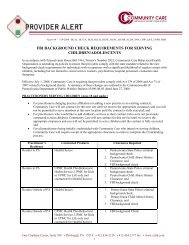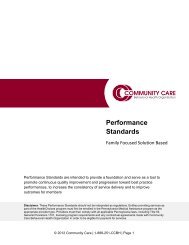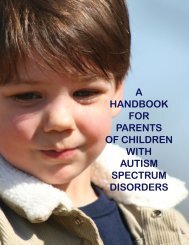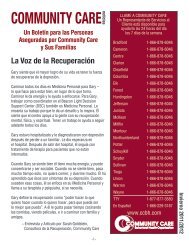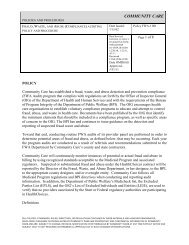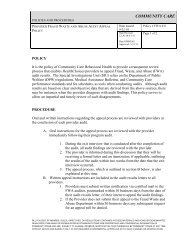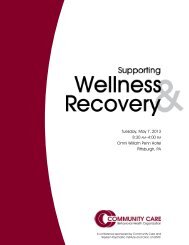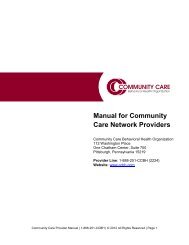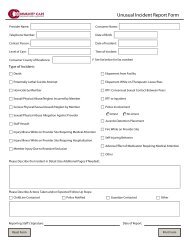a handbook for parents of children with autism spectrum disorders
a handbook for parents of children with autism spectrum disorders
a handbook for parents of children with autism spectrum disorders
Create successful ePaper yourself
Turn your PDF publications into a flip-book with our unique Google optimized e-Paper software.
What should I look <strong>for</strong> when selecting a provider to work <strong>with</strong> my child<br />
and family?<br />
If you are working <strong>with</strong> a licensed mental health agency, the behavioral<br />
specialist consultant (BSC) should have successfully completed the FBA<br />
training <strong>of</strong>fered by the Department <strong>of</strong> Public Welfare (DPW), Bureau <strong>of</strong> Autism<br />
Services or be a Board Certified Behavioral Analyst (BCBA). DPW has issued<br />
a bulletin, OMHSAS-09-01, Guidance <strong>for</strong> Conducting Functional Behavioral<br />
Assessments in the Development <strong>of</strong> Treatment Plans <strong>for</strong> Services Delivered<br />
to Children <strong>with</strong> Behavioral Health Needs Compounded by Developmental<br />
Disorders, which instructs licensed providers on expectations <strong>for</strong> conducting<br />
the FBA.<br />
Early Intervention<br />
Services can<br />
improve a child’s<br />
development.<br />
These services help<br />
<strong>children</strong> from birth<br />
to 3 years old learn<br />
important skills.<br />
Services can include<br />
therapy to help the<br />
child talk, walk, and<br />
interact <strong>with</strong> others.<br />
You should expect the results <strong>of</strong> the behavior plan to reflect the results <strong>of</strong> the<br />
FBA. The FBA should be updated if the plan is unsuccessful or new behaviors<br />
are identified. If an FBA has been completed by the school system, the results<br />
<strong>of</strong> this FBA should be also be considered in the development <strong>of</strong> the behavior<br />
plan.<br />
How should I work <strong>with</strong> the support staff when there is a crisis?<br />
The crisis plan, as outlined in Pages 7 and 8 <strong>of</strong> the OMHSAS bulletin, should<br />
be utilized when the behaviors are so significant that the child or adolescent<br />
is a threat to safety <strong>of</strong> him or herself or others, or there is a threat <strong>of</strong> serious<br />
property damage (torn worksheets do not count). The roles <strong>of</strong> all persons<br />
involved should be outlined in the crisis plan.<br />
Each plan is different as is each child and family, but, <strong>for</strong> example, if the<br />
crisis occurs while in the community the plan might state that the TSS<br />
would provide support to the child including moving objects out <strong>of</strong> the way<br />
to keep everyone safe, using the predetermined de-escalation techniques,<br />
signaling others that help is needed, asking interested observers to give some<br />
space and help keep the scene as private as possible. The parent might be<br />
holding the child’s hand so they do not run <strong>of</strong>f into the street or otherwise<br />
hurt themselves while placing a communication book in range to prompt<br />
communication.<br />
The use <strong>of</strong> the crisis plan indicates that something is not working in the<br />
behavior plan. The team should there<strong>for</strong>e meet to discuss this further and reevaluate<br />
whether changes in the current behavior plan are necessary.<br />
- Page 16 -



